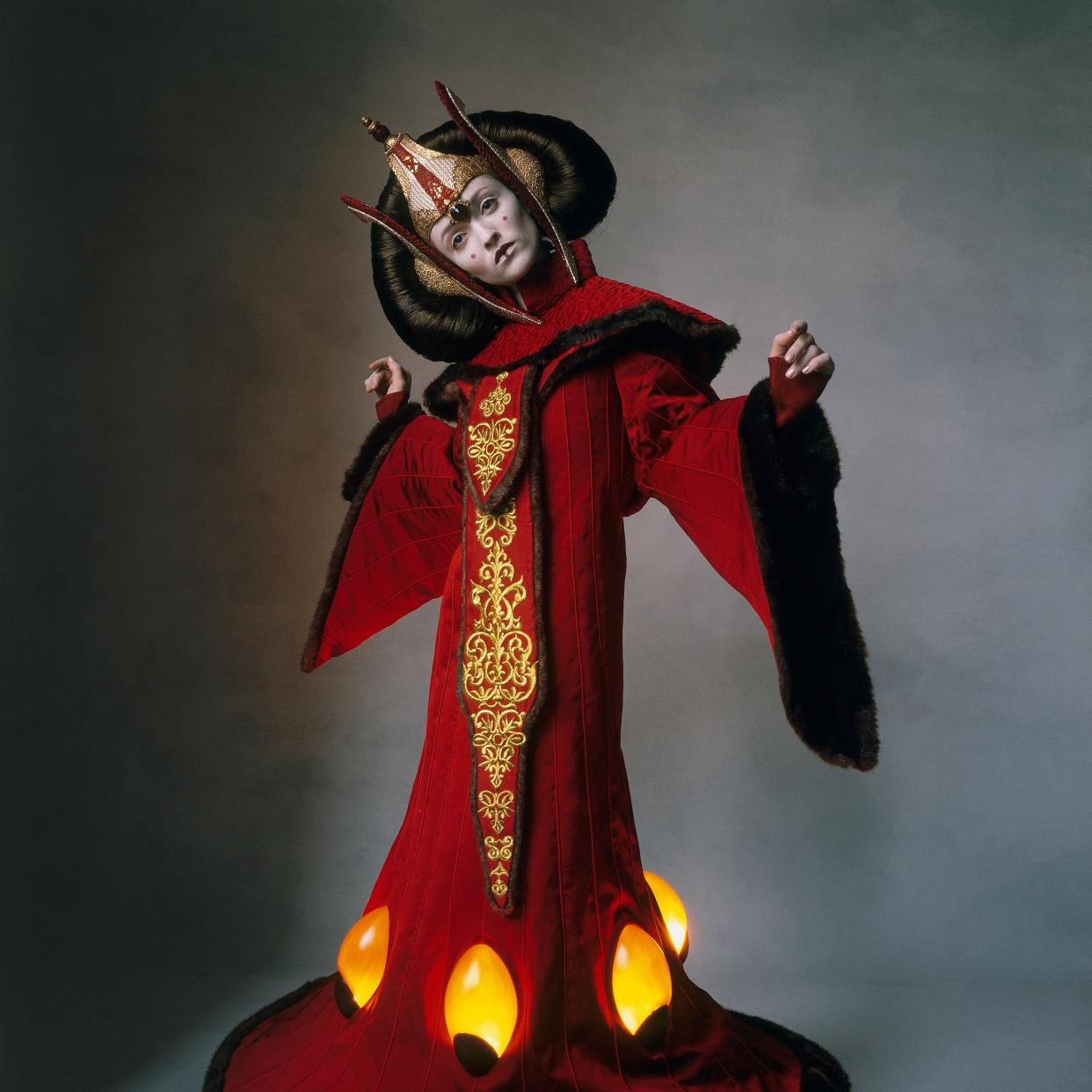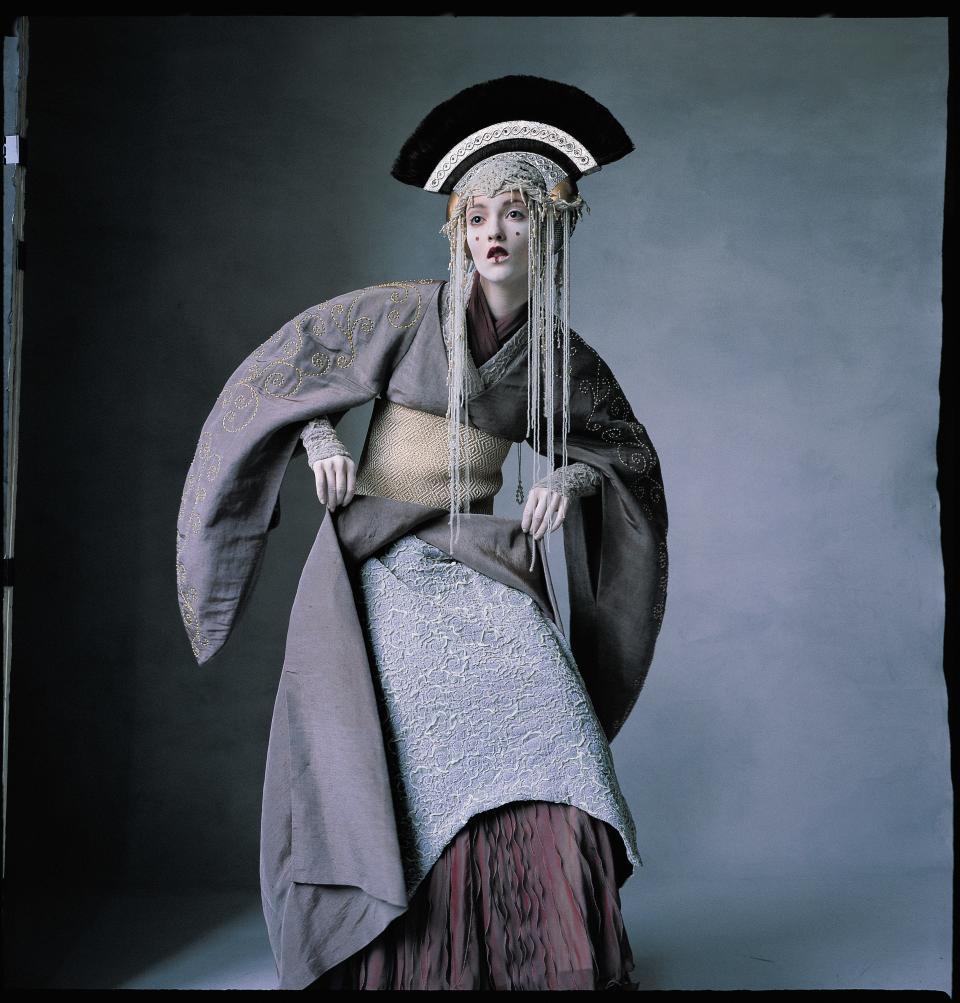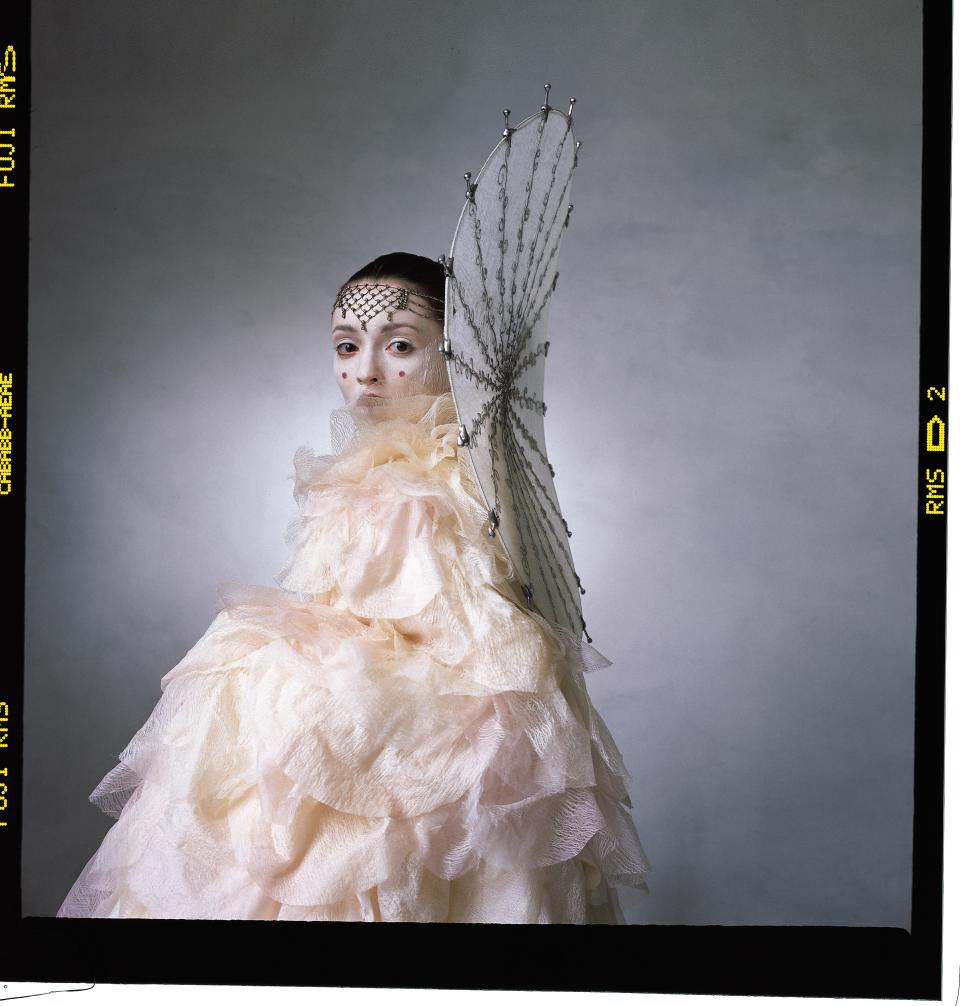Haute Couture Costumes for Hyperspace: A Look Back at the Star Wars Prequels’ Fantastical Fashion

This story is part of a series, Past/Present, highlighting images and articles from Vogue that have personal significance to our editors.
If I had to divide my interests into two categories, they would be science fiction and fashion. And it turns out that time travel, robots, and big ideas align perfectly with the world of style. Both genres are future-focused, hypothesizing what-if scenarios that portray humanity at its most daring and inventive. Both absorb references to create something new and exciting; and both filled me with a sense of possibility when I was a child. The thrill of watching a transformative runway show isn’t far off from the excitement I felt in the middle of watching the Star Wars trilogy. George Lucas’s space opera came into my life around the same time I discovered Vogue, and the two are forever linked in my consciousness.
As complementary as fashion and science fiction are, they don’t intersect all that often. But to its credit, Vogue has always looked forward when it comes to style; as such, there have been countless stories with a sci-fi feel. Steven Klein’s femmebot housewives, Raymond Meier’s high-gloss machines, and Craig McDean’s transformation of Karlie Kloss into a member of Daft Punk have all made for compelling shoots. Still, my first and favorite exploration of fashion meets futurism was Irving Penn’s 1999 masterpiece, “Star Wars Couture.”
In this photographic exploration of costume designer Trisha Biggar’s work from The Phantom Menace, Penn doesn’t aim for the glossy austerity often associated with sci-fi. Instead, the clothes are presented in the way a prized look from the runway would be. Penn’s constants—an empty studio, a pale backdrop—replace the multilayered, CGI-heavy world Natalie Portman’s Padmé Amidala inhabits in the movie. At the same time, Phyllis Posnick gives the pieces a subtle remix to connect them to the concept of couture. Those choices are fitting: Star Wars is as much about the past—radio serials, westerns, and samurai lore all served as catalysts for its creation—as it is about the future.
The serene visuals also highlight the prequel’s connection to fashion. Biggar worked for a year with a team of artisans, a process not unlike what you’d see in a Paris atelier, and the lack of distractions in Penn’s photos allows you to hone in on the details. There is plenty to appreciate: Glowing lights worked into hemlines, headdresses with baroque pearls sourced from a 1910s evening dress, and capes made with layers of silk that recall flower petals. Movies in the blockbuster vein rarely allow time for introspection. Lightsaber fights, explosions, and the constant race of a plot moving forward take precedence. Here though, the costumes are frozen in time and suspended on the page, so you’re allowed to enjoy each element.
That shift transforms the vibe of the costumes. In the film, a 16-year-old Natalie Portman pulls off the looks with gravitas, but the energy that the model Audrey Marnay brings to them is different. The French waif enhances the dreamy quality of Penn’s visuals, heightening the magic of the clothes and their surrealism, while also animating the looks with practiced ease.
These days Star Wars references in fashion aren’t unusual—Nicolas Ghesquière, Rodarte’s Kate and Laura Mulleavy, and Demna Gvasalia have all nodded to the films in their collections—but few shoutouts capture the thrill of the franchise as well as Penn’s editorial. For many years I kept a shot of Marnay pinned to the wall at our offices to remind me of why I love this industry. Though I’ve joined the rest of the country in working from home, I still pull up the picture on my computer now and again and think back to the moment when I first picked up the April 1999 issue. Penn’s loving nod to couture craftsmanship and creative possibility has stuck with me, and it remains inspiring more than 20 years later.




“Star Wars Couture,” by Hamish Bowles, photographed by Irving Penn, was published in the April 1999 issue of the magazine. Fashion Editor: Phyllis Posnick.
Originally Appeared on Vogue

